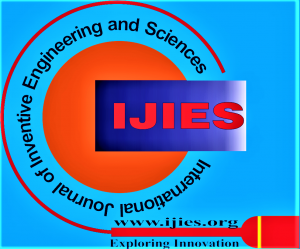![]()
Numerical and Matrix-Based High-Performance Solver of Coupled Differential Equation Models under the Consideration of Neurocomputing
Shakhzod Tashmetov
Shakhzod Tashmetov, Department of Television and Radio Broadcasting Systems, Tashkent University of Information Technologies named after Muhammad al-Khwarizmi, Tashkent, Uzbekistan.
Manuscript received on 31 July 2025 | First Revised Manuscript received on 04 August 2025 | Second Revised Manuscript received on 07 August 2025 | Manuscript Accepted on 15 August 2025 | Manuscript published on 30 August 2025 | PP: 10-14 | Volume-12 Issue-8, August 2025 | Retrieval Number: 100.1/ijies.H111712080825 | DOI: 10.35940/ijies.H1117.12080825
Open Access | Editorial and Publishing Policies | Cite | Zenodo | OJS | Indexing and Abstracting
© The Authors. Blue Eyes Intelligence Engineering and Sciences Publication (BEIESP). This is an open access article under the CC-BY-NC-ND license (http://creativecommons.org/licenses/by-nc-nd/4.0/)
Abstract: One interesting way to address the complexity of coupled differential equation models is to combine neurocomputing approaches with matrix-based high-performance solvers. In this work, we investigate how neurocomputing topologies and sophisticated numerical methods can be combined to overcome the computational challenges associated with using such models. Differential equation coupling often results in nonlinear dynamics with complex variable interactions, presenting substantial challenges for conventional computing methods. Our goal is to enhance the scalability, accuracy, and computational efficiency of complex system simulations by integrating the power of matrix-based solvers with the adaptive learning capabilities of neural networks. This multidisciplinary method has applications in physics, biology, engineering, economics, and other domains. It also promises to further our knowledge of complex dynamical systems. This paper aims to provide new pathways for approaches that can help decipher coupled differential equation models and lead to breakthroughs across a range of fields by combining theoretical analysis, algorithm development, and empirical validation to solve coupled differential equations using neurocomputing and/or matrix computation methods.
Keywords: Coupled Differential Equations (CDEs), Dynamical Systems, Matrix Operations, Nonlinear Dynamics, Neurocomputing.
Scope of the Article: Computing Architectures
